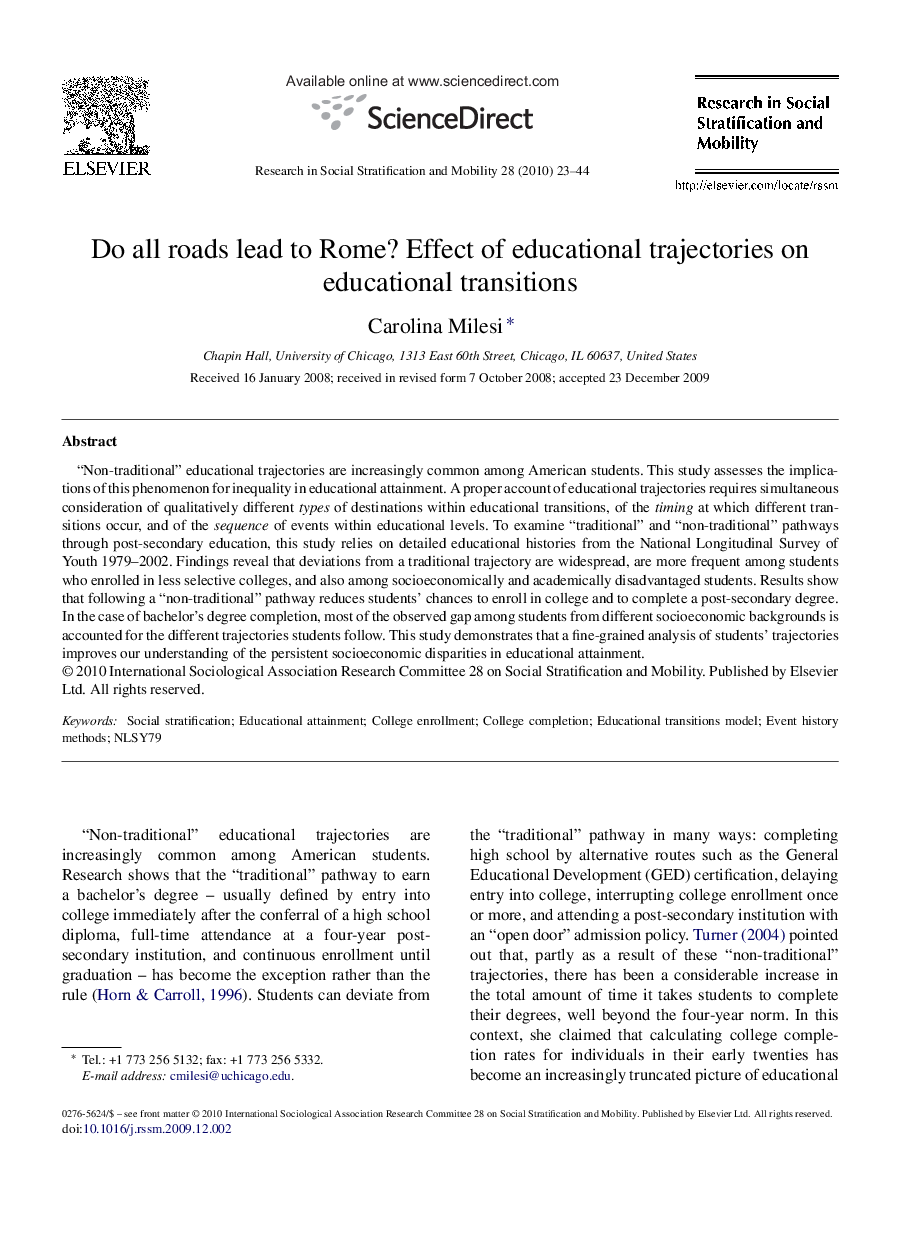| Article ID | Journal | Published Year | Pages | File Type |
|---|---|---|---|---|
| 999675 | Research in Social Stratification and Mobility | 2010 | 22 Pages |
“Non-traditional” educational trajectories are increasingly common among American students. This study assesses the implications of this phenomenon for inequality in educational attainment. A proper account of educational trajectories requires simultaneous consideration of qualitatively different types of destinations within educational transitions, of the timing at which different transitions occur, and of the sequence of events within educational levels. To examine “traditional” and “non-traditional” pathways through post-secondary education, this study relies on detailed educational histories from the National Longitudinal Survey of Youth 1979–2002. Findings reveal that deviations from a traditional trajectory are widespread, are more frequent among students who enrolled in less selective colleges, and also among socioeconomically and academically disadvantaged students. Results show that following a “non-traditional” pathway reduces students’ chances to enroll in college and to complete a post-secondary degree. In the case of bachelor's degree completion, most of the observed gap among students from different socioeconomic backgrounds is accounted for the different trajectories students follow. This study demonstrates that a fine-grained analysis of students’ trajectories improves our understanding of the persistent socioeconomic disparities in educational attainment.
